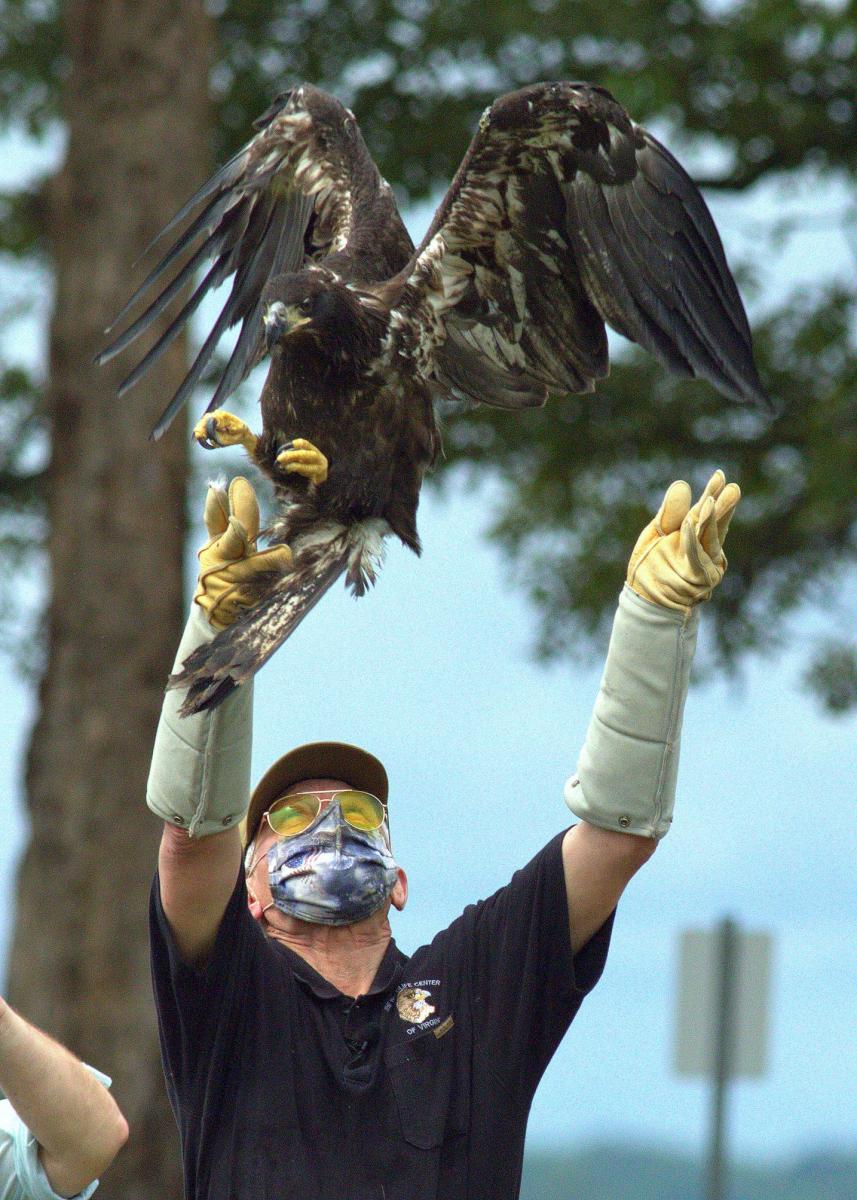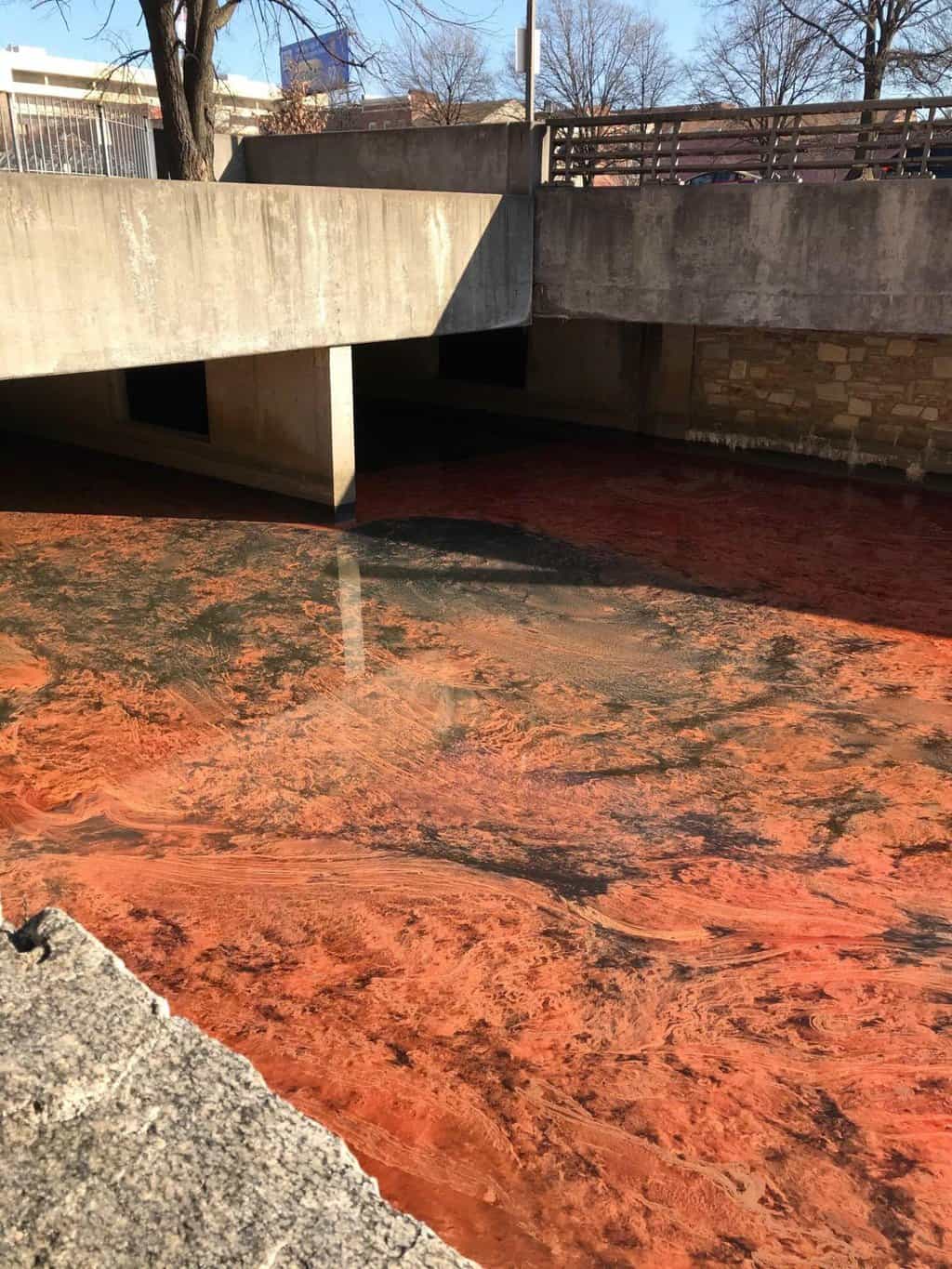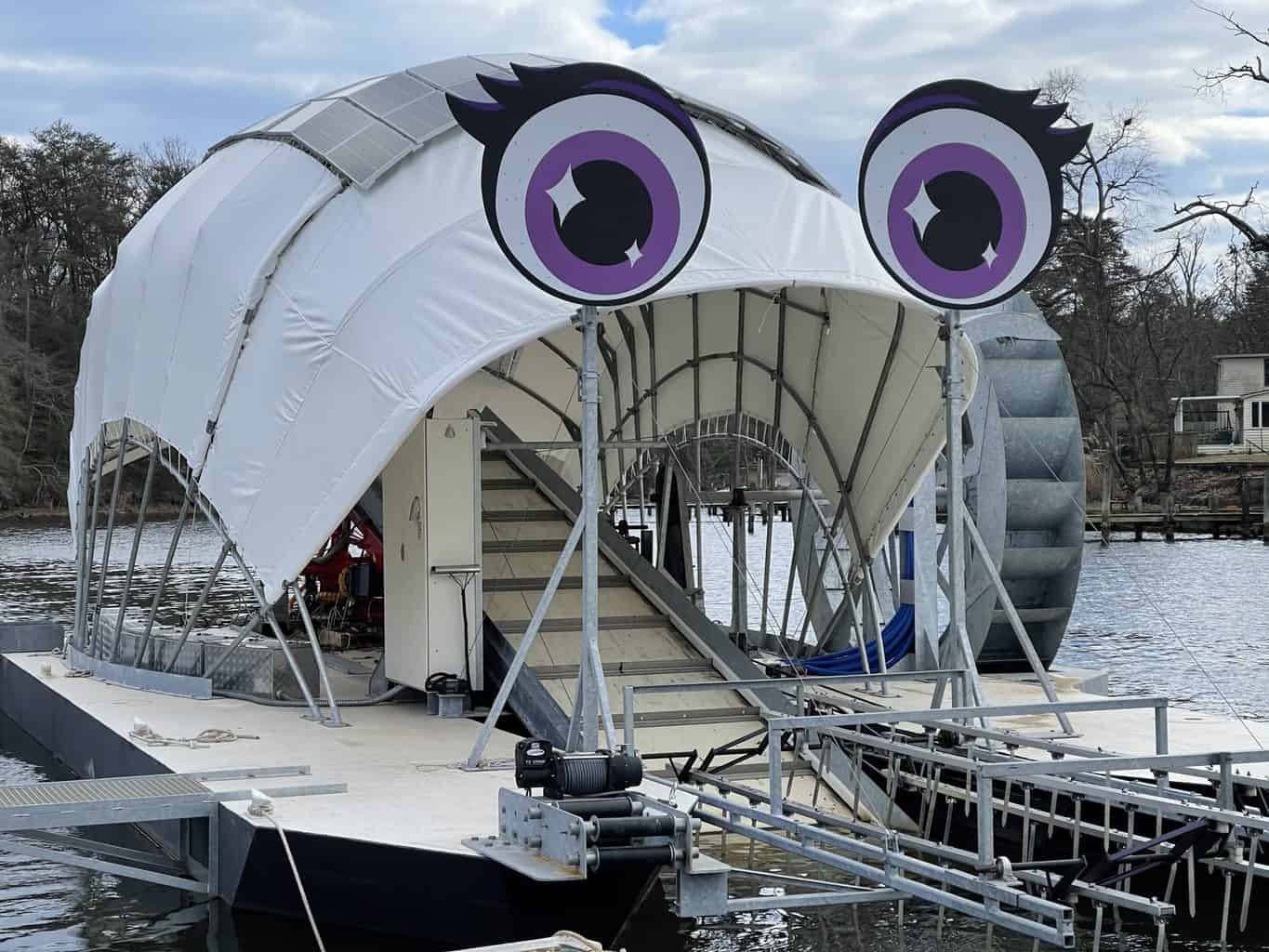It is always special to see a rehabilitated eagle take to the sky. And for Anne Richardson, Chief of the Rappahannock Tribe in Virginia, the release of a particularly resilient bald eagle at Rappahannock River Valley National Wildlife Refuge this month was especially meaningful. Her tribe has strong connections to both eagles and the location.
Patient 21-1023 was the victim of a tornado. A storm destroyed its nest before the bird had fledged. Julie Wobig, a wildlife volunteer from Williamsburg, drove to Northumberland County the day after the storm to look for survivors. There had been two chicks in the nest. Wobig quickly found one bird.
It had serious injuries and did not survive. Wobig found patient 21-1023 on her second day of searching. Since the bird was injured, it was taken to the Wildlife Center of Virginia (WCV) for treatment. There, the bird was treated for storm injuries and for lead poisoning, which is common in that region. Since eagles will scavenge other animals, they are susceptible to poisoning from lead ingested from fishing tackle and lead shot from shotguns. After treatment, and some indoor flying practice with other eagles, it was time for this resilient eagle to be set free.
The release took place at Fones Cliffs, inside the refuge. Chief Richardson attended, as the refuge sits on land that was once Rappahannock Tribe territory. When Captain John Smith explored the area in 1608, he discovered 14 villages along the north side of the river. According to Richardson, “We have found ceremonial quartz crystals at this location, indicating it was a place of spiritual significance to the tribe.” Her people believe that eagles are messengers from the creator.
Richardson did not realize how much she would be moved by the event. “Our tribe occupied that land,” she said. “When that bird spread its 6-foot wingspan, and lifted off, you could sense its freedom. It had returned. It is like our tribe had paralleled the life of this eagle. We had been hurt and almost made extinct. Now we have come back, and we even have a female leader, like this magnificent female eagle. The eagle came back and we have come back.”
Rappahannock River Valley National Wildlife Refuge is an ideal location for releasing eagles that have suffered from lead poisoning. Many hunters in the area voluntarily use non-toxic shot, and upcoming regulations will forbid the use of lead shot during managed hunts in the refuge. For this eagle, it meant being released just 20 miles from its original nest. You can find out more about the WCV at wildlifecenter.org, and the tribe at rappahannocktribe.org.
-Kendall Osborne



